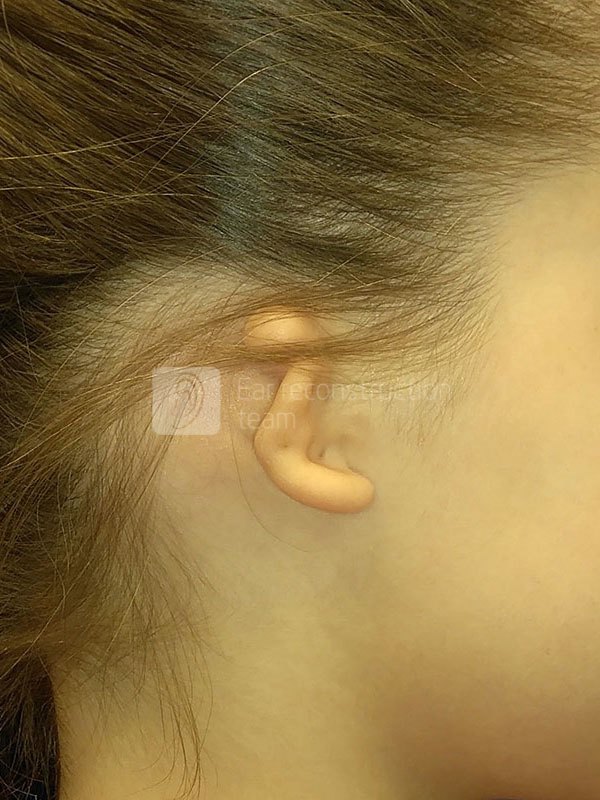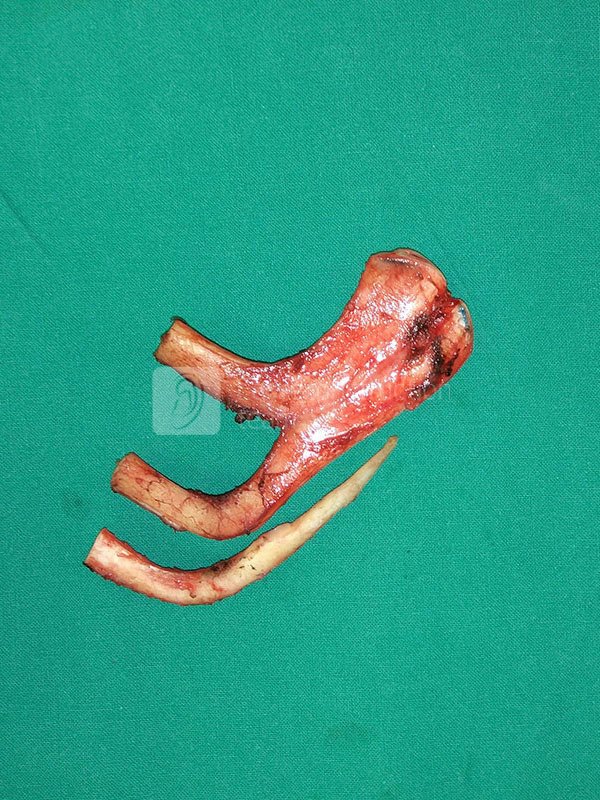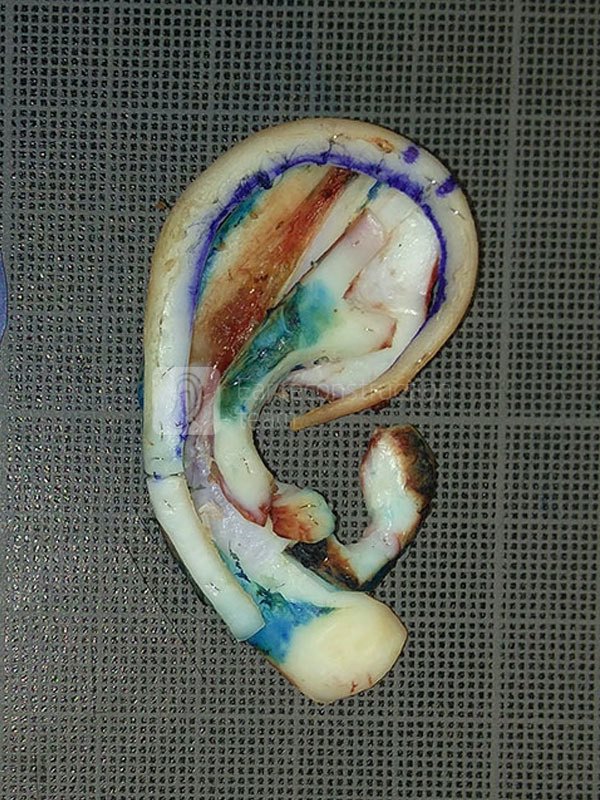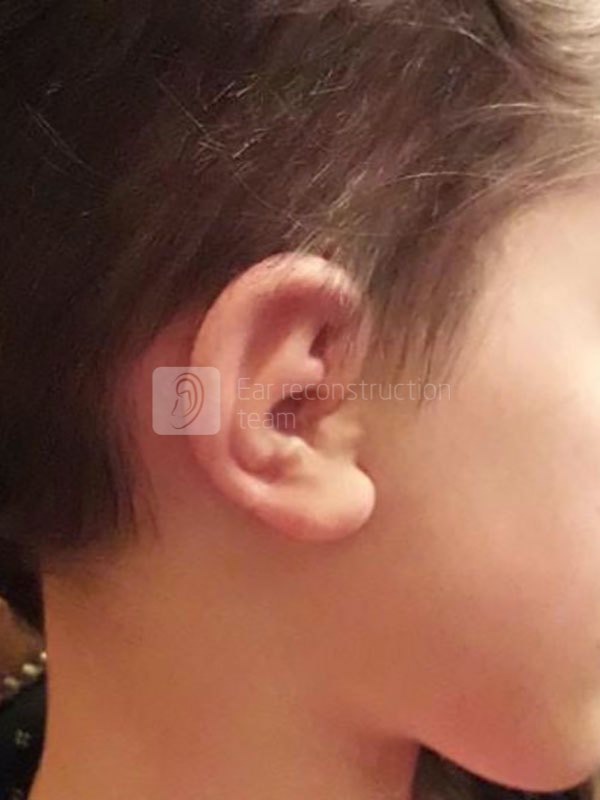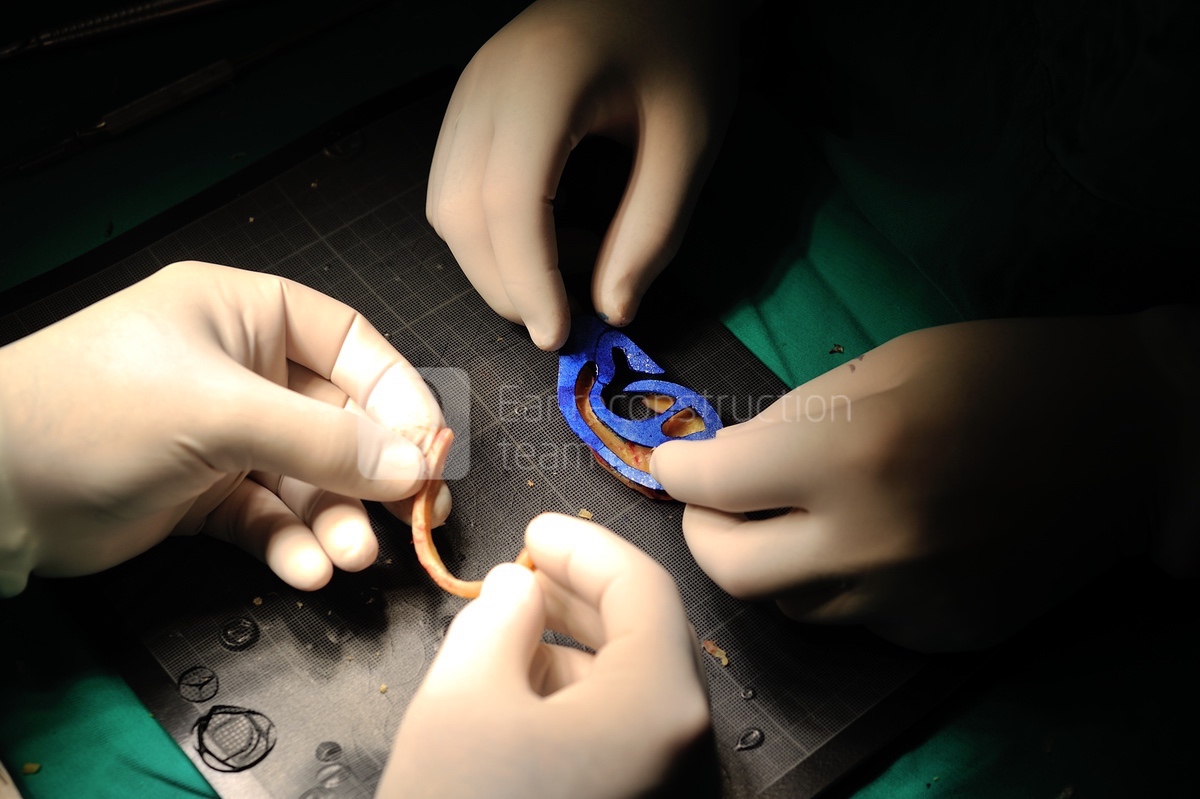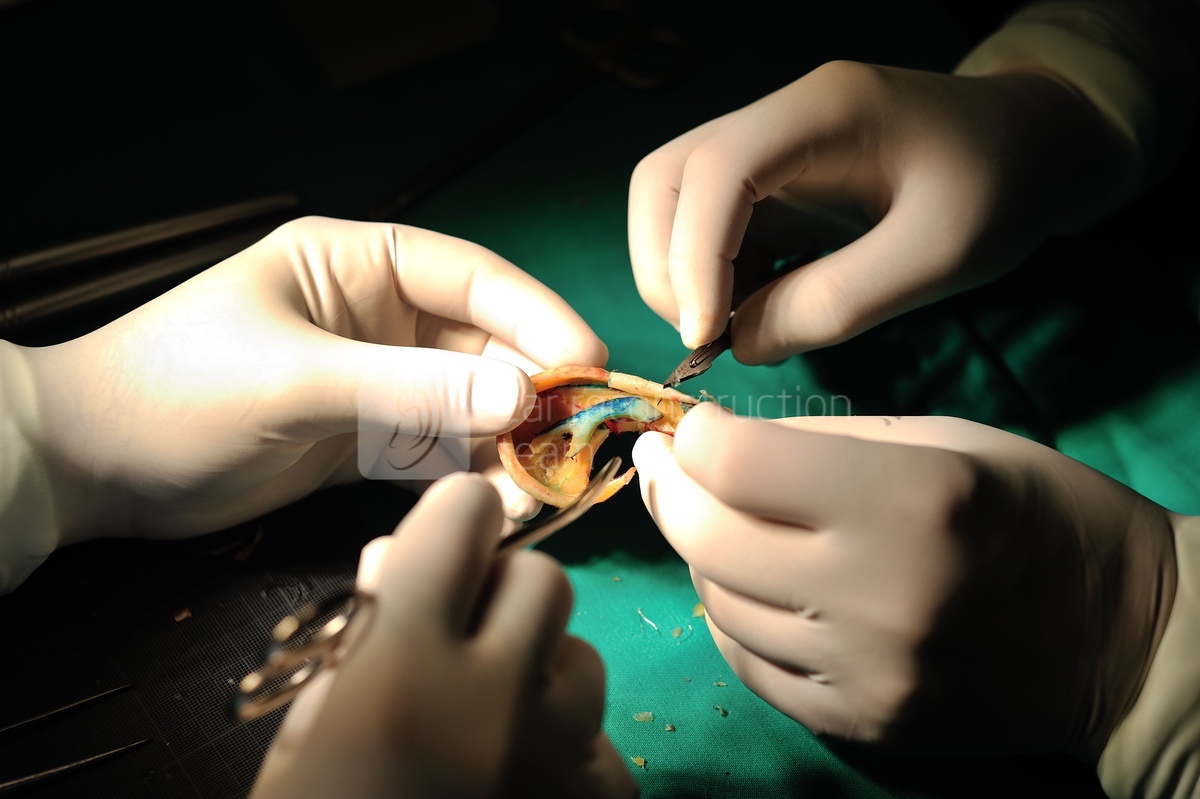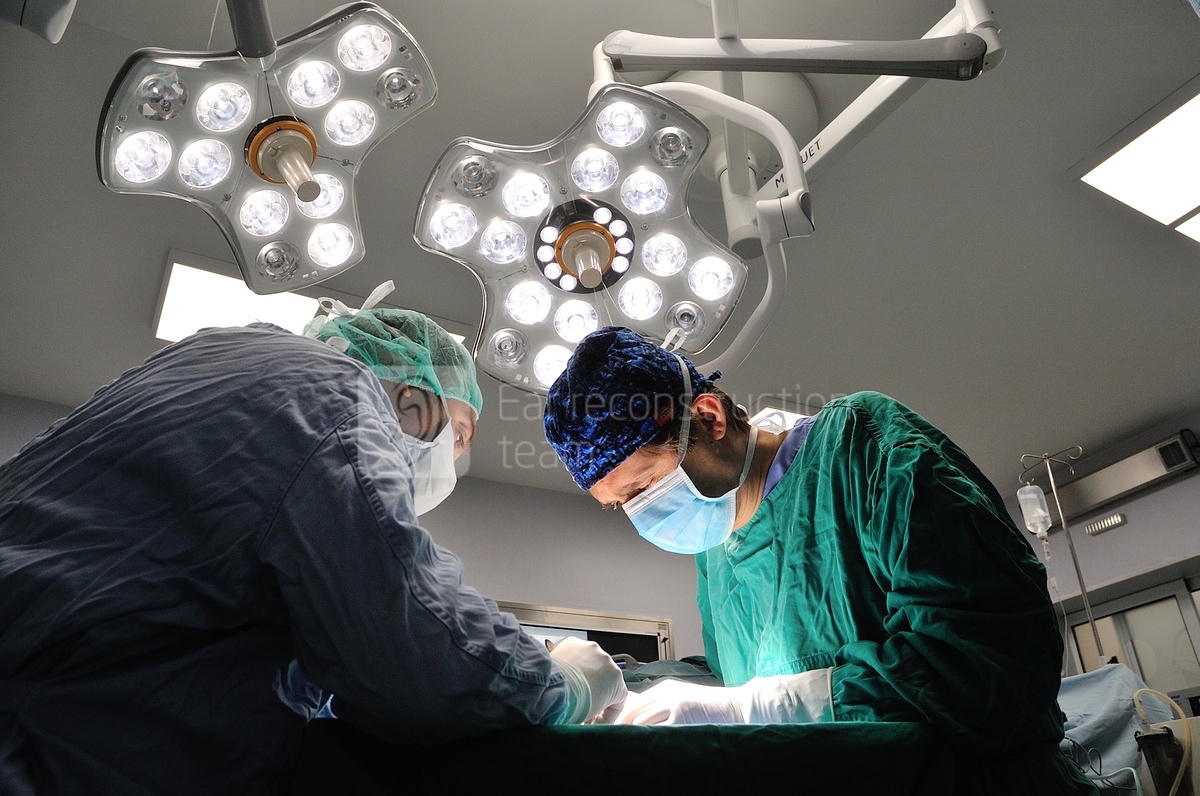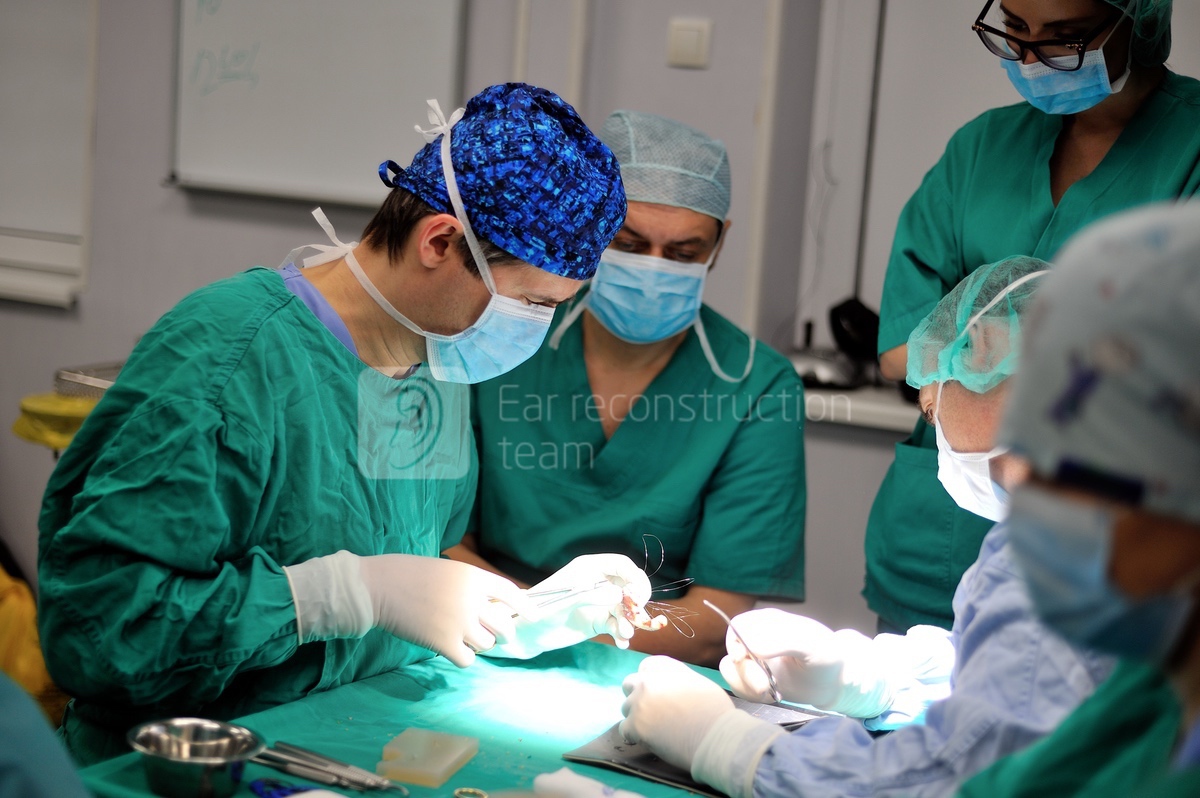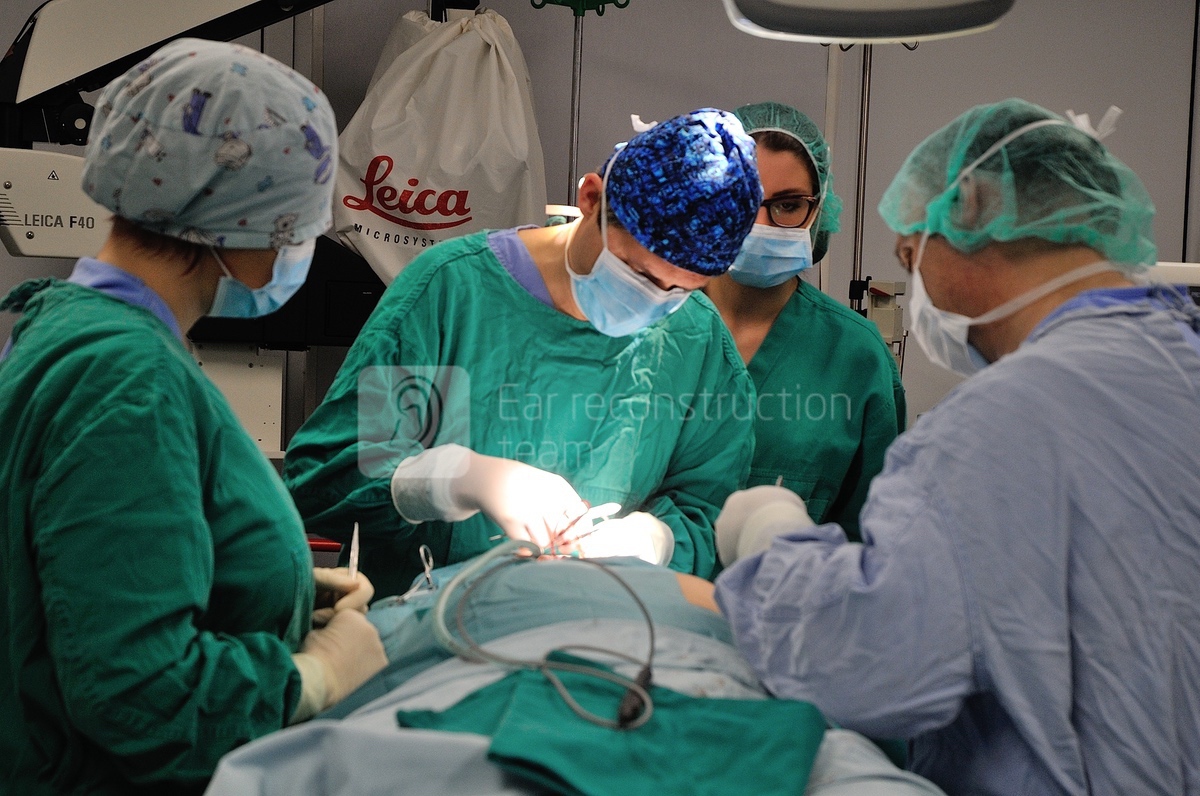Ear Reconstruction - Microtia
Ear deformitiy - Microtia
Ear deformities can lead to reduced self-confidence, both in children born with such deformities (microtia) and adults who have partially or completely lost their ear due to trauma. The lack of such an important organ effects the aesthetics of the entire face.
The best solution for such patients is ear reconstruction, one of the most complicated procedures in plastic surgery. Few surgeons in the world perform this procedure. For the last three years, our team has successfully been applying the latest surgical approach to ear reconstruction.
Microtia – most common cause of ear deformities
One out of 7000 children in the world is born with an ear deformity (microtia) or without an ear (anotia). This deformity is more common in boys. In most cases, only one ear is affected while the other one enables the child to hear and properly develop speech.
Children with microtia require an ENT control and hearing check. The audiologic testing includes a tonal liminary audiometric (at age 4), tympanometry and otoacoustic emission and BERA (Brainstem Evoked Response Audiometry) test. If needed, an analysis of the outer, middle and inner ear canal is done using computerized tomography (CT).
Patients with unilateral microtia/atresia usually have normal hearing on their other ear and treatment typically requires only monitoring or potentially using simple hearing aid devices as well as working with speech therapists if needed. Patients with bilateral microtia/atresia require an early application of hearing devices such as the Bone Anchored Hearing Aid (BAHA) or the Bone Retained Hearing Aid (soft BAHA).
Opening up of the ear canal (atresiaplasty) is a very complicated surgical procedure with unpredictable outcome. The resulting hearing improvement is minimal. This is why this procedure is rarely performed. If this approach is chosen then it is important to do it following the ear reconstruction in order to keep the anatomic integrity of the region in order for the ear reconstruction procedure to be done.
The encouraging news is that there is a surgical solution that will give the child a natural look.
Autologous ear reconstruction – the best approach
Three types of ear reconstruction are available in the world – prothesis, reconstruction with artificial implants (MEDPOR®) and autologous reconstruction – using the patients own cartilage to create the ear.
Ear prothesis are an alternative to ear reconstruction. The operation is performed in one or two stages and the prothesis is kept in position by placing titanium implants in the bone or by using adhesive tape. Children are not good candidates for prothesis as these require constant visits to the doctor, careful hygiene maintenance and frequent replacements (every 2 to 5 years). Prothesis can be an adequate solution for adults, when the ear deformity is a result of trauma or tumors.
The second option is using an artificial material of large density (porous polyethylene PPE; MEDPOR®, Stryker, Newnan, GA) to create an ear implant. This surgery is possible when the child turns 3. The advantage of this approach is that there is no need to harvest rib cartilage and the result is a natural looking ear. The implant needs to be covered with temporoparietal fascia to prevent complications such as fracturing of the implant, skin necrosis, infections and other.
The best surgical solution is autologous ear reconstruction – the patient’s own rib cartilage is used to create the ear. There is no possibility of rejecting this type of natural implant and in the hands of a trained and skillful surgeon, the rib cartilage can be shaped into a perfectly natural ear.
Multidisciplinary approach adapted to each patient
Every ear deformity is different. Therefore, the surgical approach has to be individually tailored to each patient. Our team, led by Dr Aleksandar Urosevic and Dr Aleksandar Vlahovic, is guided by the surgical principles of doctor Francoise Firmin from Paris, the world's leading expert in ear reconstruction. Dr Urosevic completed a nine-month fellowship with doctor Firmin during which he trained to perform this type of surgery.
All patients which undergo ear reconstruction are prepared prior to the operation by a multidisciplinary team of doctors (surgeons, ENT specialists, anesthesiologist and pediatric psychologist).
To undergo this surgery, the child must be at least eight years old and have a rib cage circumference of at least 60 cm. At this age, the child's normal ear has almost reached the size of an adult ear, the rib cartilage is large enough to perform the ear reconstruction and patients are mature enough to want to undergo this type of surgery.
A natural ear in two stages
The Dr Firmin surgical algorithm for ear reconstruction used by our Team is a two-stage approach. In the first stage, a surgery that lasts between five and seven hours, the surgeon will harvest the rib cartilage, mold it into the ear framework and position it into a specially prepared pocket under the skin (the ear will have a natural shape but will temporarily remain fully attached to the head). After the surgery, two surgical drains are placed into the wound to collect any liquids collecting around the framework. The drains remain for four days. The wound in the chest area, where the rib cartilage is harvested, leaves a minimal scar. The patient receives an antibiotic and analgesic therapy. The hospital stay for the first stage is typically 3 days.
In the second stage, which occurs at least six months after the first stage, the ear is partially elevated from the head. This procedure lasts about 3 hours and after the framework is elevated, the area behind the ear is covered using a skin transplant from the patient’s head or groin area (which leaves minimal scaring).
